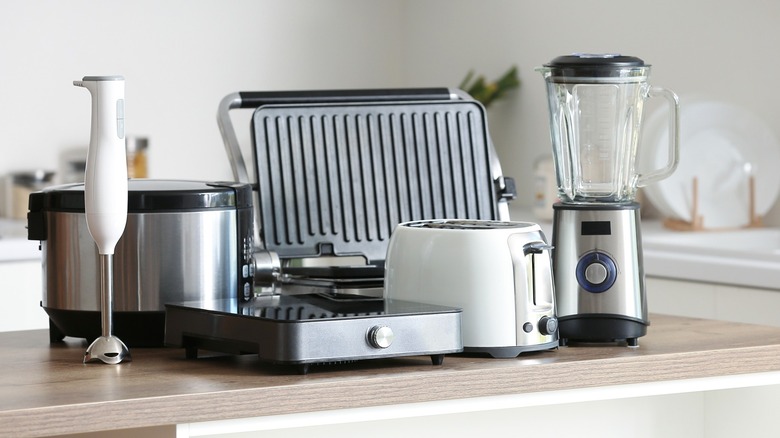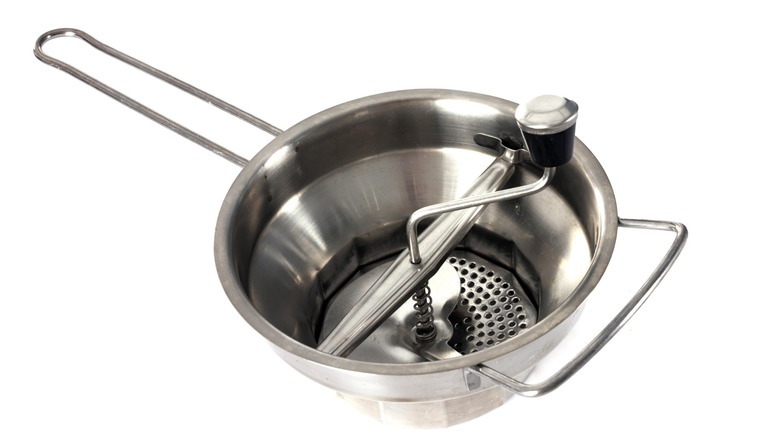This Kitchen Tool Looks Intimidating But It'll Quickly Become A Go-To Gadget
We may receive a commission on purchases made from links.
Between microwaves, air fryers, slow cookers, and all the other devices that take up space in the kitchen, it sometimes feels as if you need to put a moratorium on buying new culinary tools. But before you go to that extreme, there's one kitchen gadget you should make room for on your countertop. You don't often see it prominently displayed in stores these days with the widespread availability of electric food processors and blenders, but if you happen to run across a food mill, snag it.
Folks unfamiliar with the tool are bound to be a bit confused at first, especially in a world where manual culinary devices are largely a thing of the past. Yet, after using it once or twice, you'll realize its genius is its simplicity. The apparatus has three parts: a bowl, a curved milling disk, and a crank attached to a blade. The milling disk sits inside the bowl (with the curve facing up), and the blade fits into the middle of the disk via a small peg. The blade is steadied by affixing two tabs to the sides of the bowl.
Once assembled, just plop some fruits or vegetables into the bowl and start cranking. The blade crushes the produce and squeezes it through the small holes of the milling disk, creating a paste. There is no need to peel or deseed the fruits or veggies beforehand because the holes of the milling disk are too small for seeds and skins to pass through. It's not necessarily the easiest way to make a puree, but it is one of the most efficient.
The advantages of a food mill over a food processor
There may be some folks wondering why you would use a manual food mill instead of plugging in a food processor and pulverizing fruits and veggies that way. The electronic device does take elbow grease out of the equation, to be sure. Yet, using a food mill comes with its own set of advantages that food processors lack.
Making a pumpkin puree from scratch? Using a food mill to mash the pumpkin flesh makes separating the seeds a breeze. The same concept applies to making a summer soup with leftover watermelon. Anytime you want to make a puree, thicken a soup or sauce with crushed veggies, or pulverize fruits for a canned preserve, a food mill accomplishes those goals more efficiently than a food processor because it also acts as a strainer. And because you utilize every bit of the produce sans skins and seeds, you end up with minimal food waste.
Oftentimes, a food mill comes with multiple milling disks with different-sized holes. This ExcelSteel Food Mill comes with three (and only costs about $40). The smaller holes are perfect for preventing tomato seeds from ending up in a tomato puree, while the disk with larger holes is ideal for keeping potato skins out of a thick mashed potato. It may require a bit more physical effort than some automated kitchen gadgets, but a food mill makes up for that in spades by saving you from peeling and deseeding produce whenever you need it pureed into a dish.

